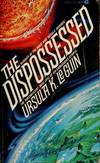
Nuclear Weapons and Aircraft Carriers; How the Bomb Saved Naval Aviation
by Miller, Jerry
- Used
- Very Good
- Hardcover
- first
- Condition
- Very Good/Very good
- ISBN 10
- 1560989440
- ISBN 13
- 9781560989448
- Seller
-
Silver Spring, Maryland, United States
Payment Methods Accepted
About This Item
Synopsis
Formerly commander of the U.S. Second Fleet and NATO striking forces in the Atlantic as well as the U.S. Sixth Fleet and NATO striking forces in the Mediterranean, Jerry Miller retired from the U.S. Navy in 1974. He spent most of his thirty-eight-year career as a fixed-wing pilot, seeing surface combat in a cruiser in the Pacific during World War II, becoming a fighter pilot and a commander of a fighter squadron during the Korean War, and commanding a carrier division during the Vietnam War. Since his retirement from active duty, Miller has used his extensive Navy experience in nuclear weapons targeting and delivery to serve as a national security consultant on arms control.
Reviews
(Log in or Create an Account first!)
Details
- Bookseller
- Ground Zero Books
(US)
- Bookseller's Inventory #
- 83973
- Title
- Nuclear Weapons and Aircraft Carriers; How the Bomb Saved Naval Aviation
- Author
- Miller, Jerry
- Format/Binding
- Hardcover
- Book Condition
- Used - Very Good
- Jacket Condition
- Very good
- Quantity Available
- 1
- Edition
- First Printing [Stated]
- ISBN 10
- 1560989440
- ISBN 13
- 9781560989448
- Publisher
- Smithsonian Institution Press
- Place of Publication
- Washington DC
- Date Published
- 2001
- Keywords
- Nuclear Weapons, Cold War, Naval Operations, Aircraft Carriers, Frederish Ashworth, Arleigh Burke, Arthur Radford, Louis Denfeld, Blandy, William Parsons, Deak Parsons, United States Navy
Terms of Sale
Ground Zero Books
About the Seller
Ground Zero Books
About Ground Zero Books
Much of our diverse stock is not yet listed on line. If you can't locate the book or other item that you want, please contact us. We may well have it in stock. We welcome your want lists, and encourage you to send them to us.
Glossary
Some terminology that may be used in this description includes:
- New
- A new book is a book previously not circulated to a buyer. Although a new book is typically free of any faults or defects, "new"...

